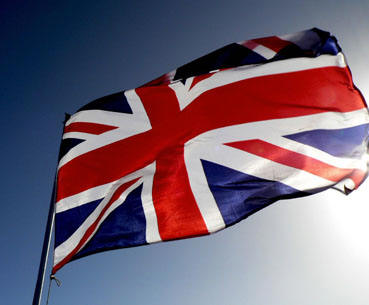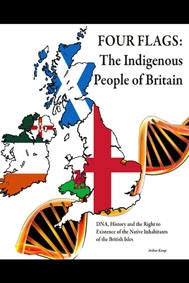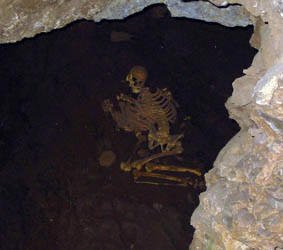The “Mongrel Race” Nonsense Refuted
Tue, 15/06/2010 - 10:12 | BNP News
By Alan Robertson — Two weeks
before the election this year, Sandy Walkington, a Liberal Democrat
candidate for St Albans said, "We're all mongrels. I mean, this country is
the most mongrel country in the world. In 200 years we'll all be
coffee-coloured — and I've got no problem with that.”

It is outrageous and deeply
offensive that politicians, the media and left-wing celebrities have
promoted the lie that we are somehow all basically from mixed breeding stock
in order to legitimise the invasion by hordes of foreigners.
Eddie Izzard said in his TV series Mongrel Britain, “our country has been massively diverse for most of its history — a blend of Angles, Saxons, Romans, Vikings, Celts.”
But the history of the British people shows that we have been here for thousands of years and that past invasions have contributed no more than five percent to our population.
Izzard speaks with excitement about “rich diversity” and “a dynamic and vibrant mix of foreign genes.”
Yet there is nothing vibrant or dynamic about losing your job to cheap Eastern European workers or finding that you can’t spot a white face in your high street.
The diversity he speaks of isn’t rich. The UK is poorer as a result of free handouts for immigrants and gifts to third world countries.
Our cultural heritage has been savaged as we are forced to accept barbaric religions and the criminal scamming culture that we always knew was present in poor countries.
How dare they smile condescendingly while they attempt to change history and teach us that we owe everything, as Izzard claims, to “waves of invasion, centuries of immigration and floods of foreign ideas.”
The numbers of invaders were in fact few — mostly only in the tens of thousands and, crucially, all of the invaders' origins were limited to northern Europe.

This is supported
fully by up-to-date genetic evidence in the book
Four Flags: The Indigenous People of Britain by Arthur Kemp. (Available
here).
Kemp presents genetic evidence proving that the vast majority of British people have ancestors going back 12,000 years when haplogroups R1b, I and R1a spread northwards. British people with the R1b1 DNA haplotypes have on average a 74 percent homogeneity, with the remainder coming from countries just across the sea.
Historical records offer proof as well:
The Romans invaded in AD 43 with an army of 40–45,000 men but only 16,000 legionaries were stationed here afterwards.
Estimates for the population at that time are around 1.5 million; therefore, the effect of this invasion was one to two percent (Eagles Over Britannia: The Roman Army in Britain by Guy de la Bedoyere).
“In the sixth century the Anglo-Saxon element in the population of Britain amounted to no more than fifty to a hundred thousand” (Arthur's Britain: History and Archaeology AD 367–634 by Leslie Alcock).
Therefore, the Anglo-Saxon contribution would be somewhere between three and six percent.
DNA evidence shows that the R1a Haplogroup for Anglo-Saxons in England is 4.5 percent, a remarkable correlation (Kemp, ibid).
Between 789–1104 AD, the Vikings were known for their ferocious attacks on villages but only small numbers actually settled. War bands were tiny: “from seven to thirty-five a band and above three dozen an army” (Anglo-Saxon England by Lloyd and Jennifer Laing).
After the Norman Conquest, William, Duke of Normandy, dismissed his mercenaries and nearly all returned to France.
“The probability is that the Continental settlement did not involve more than 10,000 people — and perhaps as few as 5,000” (Offshore Islanders: From Roman Occupation to European Entry by Paul Johnson). “England simply acquired a new ruling class,” writes Johnson.
The Flemish and Walloons came from what is now Belgium, the Netherlands, Luxemburg and parts of northern France and Germany. About 16,000 were recorded in 1440, which was less than one percent.
The population at the time was estimated between two and 2.5 million, and had diminished as a result of the Black Death (Roots of the Future: An Education Pack for Exploring Ethnic Diversity in Britain by Peter White).
The Jews also settled at various periods in history but did not approve of marriage to Gentiles. In 1290, the community of around 5,000 was expelled by Edward I.
They returned slowly and by 1815, there were around 20–30,000. Around 55,000 Jews arrived between 1933 and 1939. Britain’s population was at 40 million in 1940, and therefore the Jewish contribution was at best 0.3 percent.
Throughout the eighteenth and nineteenth centuries, there was a small trickle of people from all over Europe. In England and Wales, the 1871 census recorded 32,823 Germans, an Italian population of 5,063, again not significant amounts compared to the population of 20 million.
The Commission for Racial Equality (CRE) estimates 50,000 Huguenot and 80,000 French Protestants arrived between 1680 and 1720. About 40,000 of these left for America.
However, around 1685, the population of Britain was four to 4.5 million, meaning that the contribution was still only about two percent (White, ibid; and Alien Immigrants to England by W Cunningham).
Between 1600 and 1800, people didn’t welcome foreigners with open arms and intermarriage of any sort was infrequent. Even when William of Orange came to England to unseat the unpopular James II, he was accompanied only by approximately 11,000 foot and 4,000 horse soldiers. The effect of his invasion was once again small.
The marriages between kings and queens of Europe and their relative squabbles did not have much of a bearing on the poor, often starving, ordinary people who mostly stayed where they were for thousands of years.

Cheddar Gorge Man
Possibly one of the best examples is Cheddar Gorge Man who is an
example of how people have stayed where they were for thousands of years.
The remains of Cheddar Man were excavated in 1903 and have been dated at around 7,150 BC.
In 1996, his DNA was profiled and a sample from 20 residents of a nearby village was taken. It produced two exact matches and one match with a single mutation. The close match was a history teacher named Adrian Targett.
What this means is incredible — these people are direct descendants of Cheddar Man and still live in the same area, nearly 10,000 years later.
The historical and genetic evidence support the fact that there is indeed a native people of Britain who have a right to this land. We have as much right as the American Indians, Aborigines or Maoris.
There were invasions and a small amount of migration but, as has been already stated, these were from people just across the channel.
So why do they wish to convince us that we are all mixed race?
The agenda of previous Labour and Conservative governments have only ever been concerned about re-election at any cost.
They know that importing cheap workers will provide short-term prosperity and thus they will secure re-election.
By offering free handouts to immigrants they know that when the time comes they can count on the ethnic vote.
The proof is here. They have betrayed their own people.
The erasure of the native British people today has already begun and it is legitimised by whitewashing over our truthful British history with lies. Don’t stand for it.